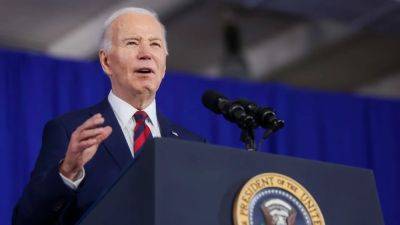Why is the Japanese yen so weak?
yen is at three-decade lows and under enough pressure to prompt strong official warnings of intervention to prop it up.
The yen has fallen despite Japan's first interest rate hike since 2007 and optimism about the economy. It traded at 153.24 per dollar on April 10, its weakest since 1990 and in real terms it is at its weakest since at least the 1970s.
A weaker yen is a boon for Japanese exporters' profits, and for tourists visiting Japan who find their currencies going further, but it squeezes households by increasing import costs.
Here are some of the reasons for the slide:
RATES
Interest rates and momentum are powerful forces in foreign exchange markets. Both are against the yen. The yen has been steadily falling for more than three years and has lost about a third of its value since the start of 2021.
The yen is also the lowest-rate, or yielding, G10 currency. That means investors are borrowing it cheaply and selling it to invest in higher-yielding currencies, driving its price down.
These deals, known as a «carry trades» are particularly attractive when broader market volatility is low, as it is right now, as the fundamental rate difference drives markets.
Short-term Japanese rates are held below 0.1% and are not expected to rise much further.
Short-term U.S. rates are at 5.25-5.5% and a U.S. rate cut isn't expected until September or November.
The U.S.-Japan government bond yield gap at the 10-year tenor is almost 370 bps.
RELOAD
Japan's central bank made a historic shift out of negative interest
Read more on economictimes.indiatimes.com























